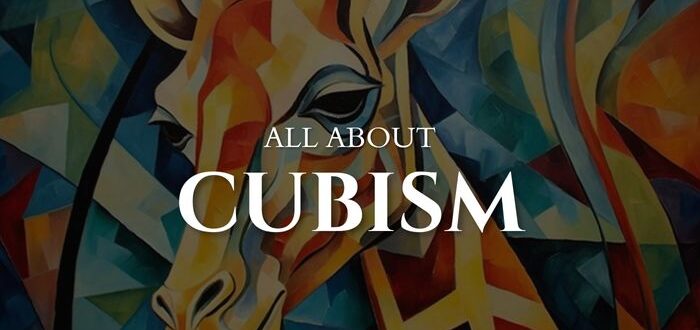Cubism: Shattering Perspectives and Redefining Reality in Art
Cubism is an early-20th-century avant-garde art movement that began in Paris and revolutionized painting and the visual arts world.
What is Cubism?
Cubism was a revolutionary new approach to representing reality invented in around 1907–08 by artists Pablo Picasso and Georges Braque. They brought different views of subjects (usually objects or figures) together in the same picture, resulting in paintings that appear fragmented and abstracted.
Cubism opened up almost infinite new possibilities for the treatment of visual reality in art and was the starting point for many later abstract styles. By breaking objects and figures down into distinct areas – or planes – the artists aimed to show different viewpoints at the same time and within the same space and so suggest their three-dimensional form.
The Origins of Cubism
Cubism began around 1907 in Paris, as Picasso and Braque began to experiment with new ways of depicting the world. Inspired by African art, particularly masks, and sculptures, as well as the post-impressionist works of Paul Cézanne, they sought to break away from the single viewpoint perspective that had dominated Western art since the Renaissance.
Instead of portraying subjects from one angle, Cubist artists deconstructed forms into a series of geometric shapes and reassembled them in abstract compositions. This allowed them to depict an object or scene from multiple perspectives simultaneously, creating a fragmented yet coherent image. ‘A head’, said Picasso, ‘is a matter of eyes, nose, mouth, which can be distributed in any way you like’.
How Did The Term ‘ Cubism’ Originate?
The term “Cubism” was coined by Louis Vauxcelles, a 20th-century art critic. When writing a critique of artist Georges Braque’s landscape work, Vauxcelles identified geometric shapes and referred to them as “cubes.” While the term was supposed to be used as a negative critique, by 1911 “Cubism” was a popular term used by the public to describe the revolutionary artistic style.
Types of Cubism: Analytical vs Synthetic
Cubism can be seen to have developed in two distinct phases: the initial phase called analytical cubism, and a later phase of cubism known as synthetic cubism.
Analytic Cubism is characterized by the deconstruction of objects into monochromatic, geometric shapes, and Synthetic Cubism, which involves simpler shapes, brighter colours, and the incorporation of mixed media and collage.
The Impact of Cubism on Indian Art
Although Cubism originated in Europe, its revolutionary ideas soon spread across the globe, influencing artists far beyond the Western world, including in India.
One of the most renowned Indian artists associated with Cubism is Maqbool Fida Husain, often referred to as the “Picasso of India.” Husain, who was deeply influenced by European modernist movements, including Cubism, incorporated its principles into his work.
The true pioneer of cubism in India and acclaimed for his satirical works of art is Gaganendranath Tagore, a prominent member of the Tagore family and a pioneering modernist painter. Gaganendranath’s experiments with Cubism can be seen in his later works, where he used angular forms and a muted colour palette to depict both urban and rural scenes.
Conclusion
Cubism was more than just an artistic style; it was a revolutionary approach to seeing and representing the world. Its influence on Indian artists like M.F. Husain and Gaganendranath Tagore demonstrates how its principles could be adapted to different cultural contexts, resulting in a rich and diverse body of work that continues to inspire.
Masterpieces Under the Hammer
Join us this October at the Giftex Art Auction, where history meets the present in an extraordinary collection of famous works from renowned artists like Jamini Roy, M F Husain, T Vaikuntam, and more. Don’t miss your chance to own a piece of art history! From Impressionist gems to cubist marvels, this exclusive event offers a rare opportunity to acquire works that inspire and captivate.
Mark your calendar for 14-15 October and get ready to bid on brilliance!






